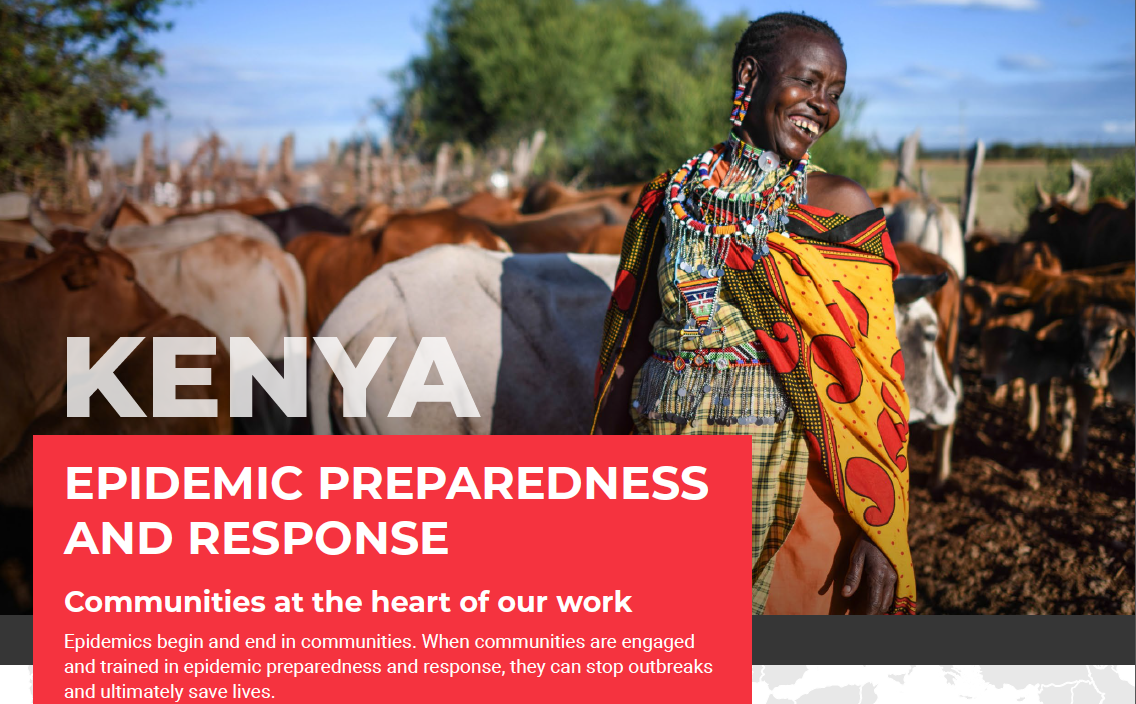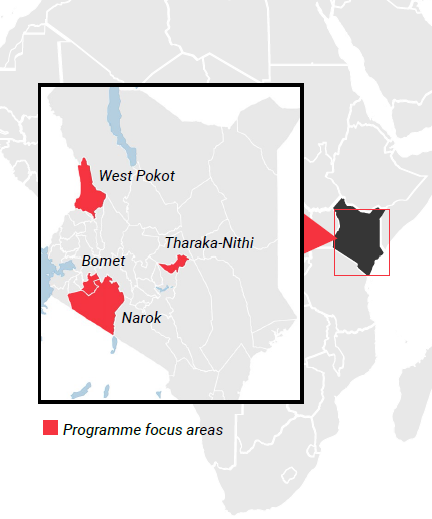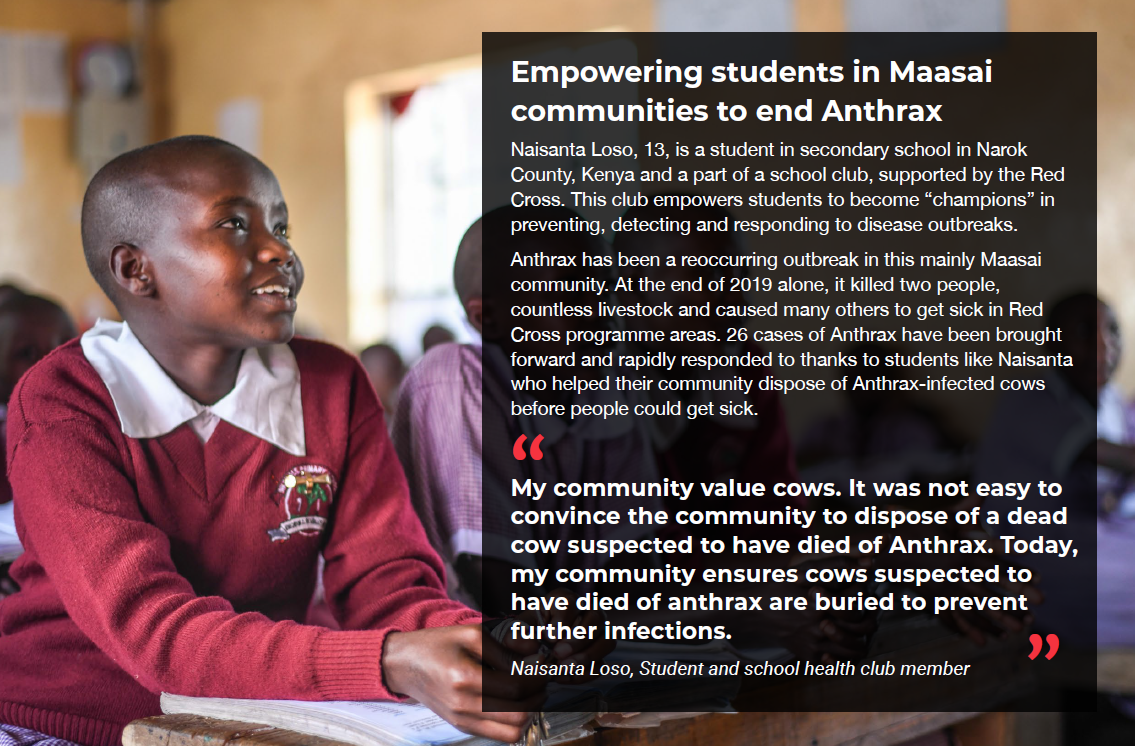


Kenya is one of the hotspots for emerging infectious zoonotic diseases, such as Rift Valley fever, Anthrax, avian influenza, African swine fever and rabies, among others. Many communities are at high risk of being exposed to these disease outbreaks because of their close proximity with wildlife and livestock. In communities like the Maasai, there are deep-rooted cultural connections with livestock. Kenya also faces other major health vulnerabilities including cholera, measles, polio and viral haemorrhagic fevers. There is limited reach into many communities in Kenya to detect, report and control disease outbreaks early and communities are not aware of actions to take during these outbreaks.
Kenya Red Cross, with support from the International Federation of Red Cross and Red Crescent Societies (IFRC) and funding from USAID, has been helping communities prepare and prevent the spread of diseases. Focusing in Bomet, Narok, Tharaka-Nithi and West Pokot, Kenya Red Cross is working with governments, communities, local responders and humanitarian partners to collectively prepare for and respond to epidemics.
Kenya Red Cross is providing critical information, community-based surveillance and referrals in coordination with the Ministry of Health and Ministry of Agriculture, Animal Industry and Fisheries to help stop diseases from spreading before an outbreak occurs.


We are ensuring communities have itical information about the spread of diseases and how to prevent them, systems to detect outbreaks and mechanisms that ensure information sharing and community engagement.Activities include:
• Engaging communities through house-to-house visits, school clubs and group discussions.
• Strengthening community-based referral systems.
• Engaging, training and collaborating with community influencers, such as religious leaders and traditional healers.
Sierra Leone Red Cross has more than 11,000 volunteers across the country which gives extraordinary reach into communities. In their supporting role to the government, they are often central to emergency responses amid outbreaks. Activities include:
• Contingency planning with government and key partners.
• Strengthening systems to enable a fast, scaled-up response.
• Strengthening partnerships with different sectors and ministries.
• Training and readying communitybased volunteers.
.Epidemics not only threaten lives but all aspects of society, including trade, transportation and education. We work with a variety of key stakeholders and the media in epidemic preparedness and response. Activities include:
• Helping prepare a variety of sectors to respond (including those affected by both animal and human health).
• Mapping critical data to help responders make informed decisions when a health crisis hits.
• Training media to communicate lifesaving information to affected populations.